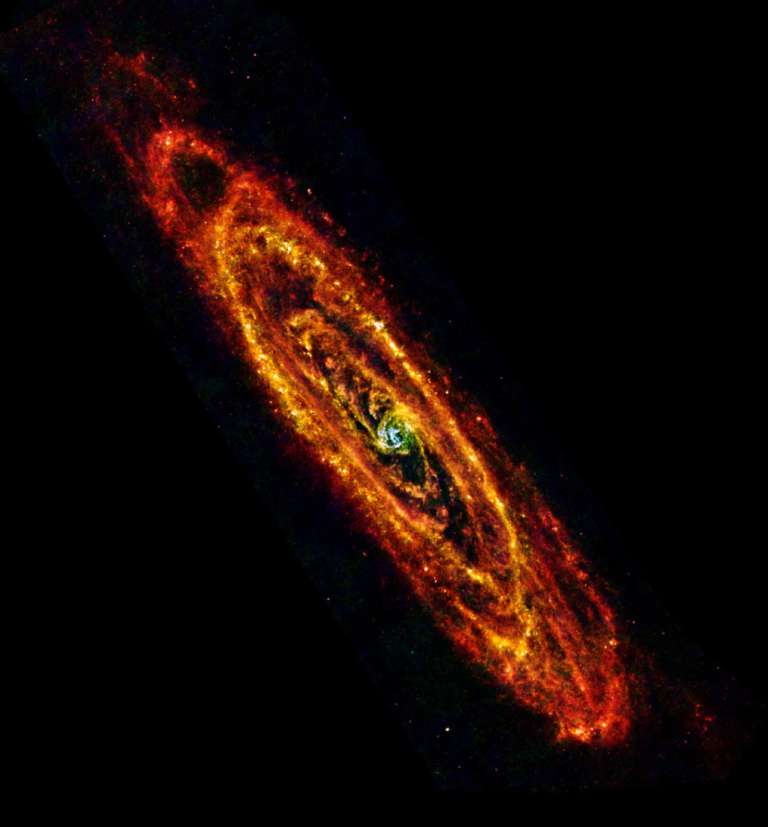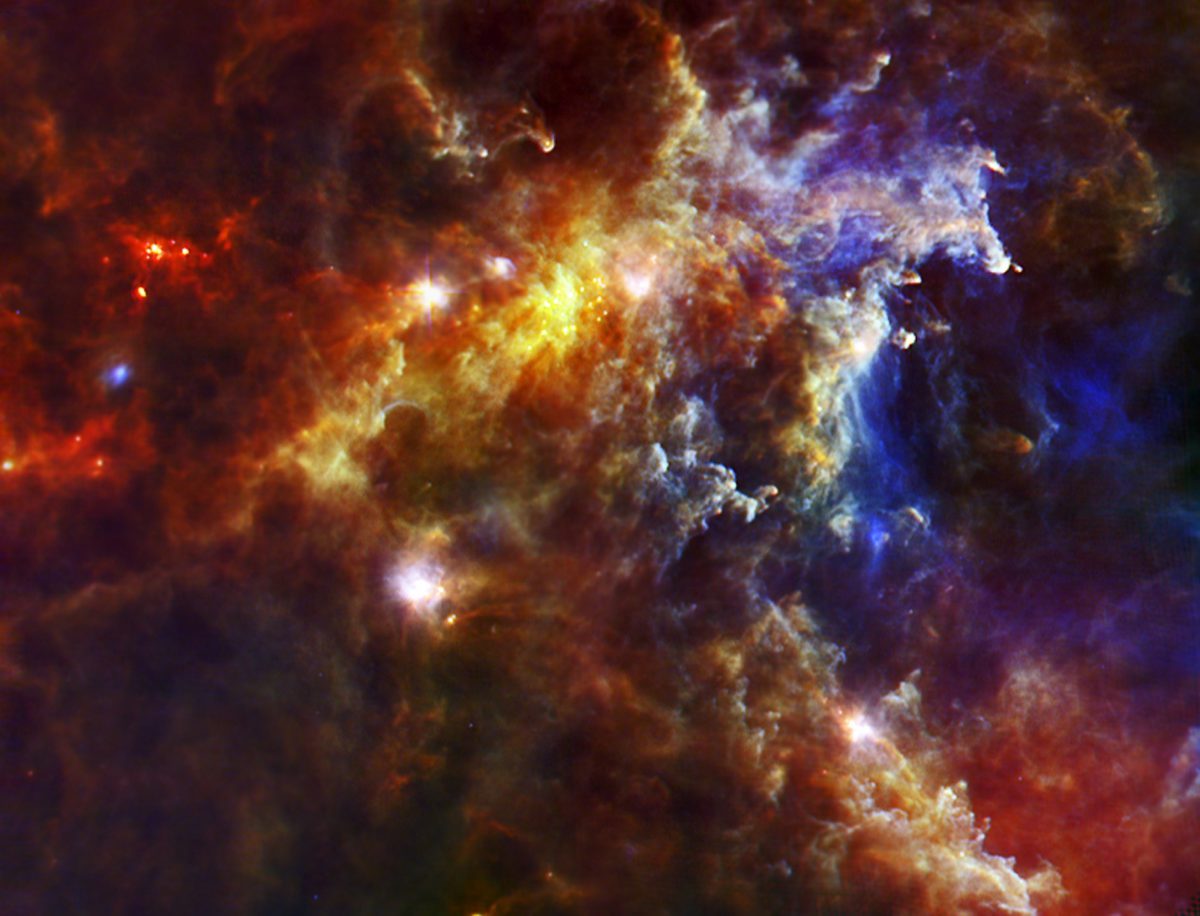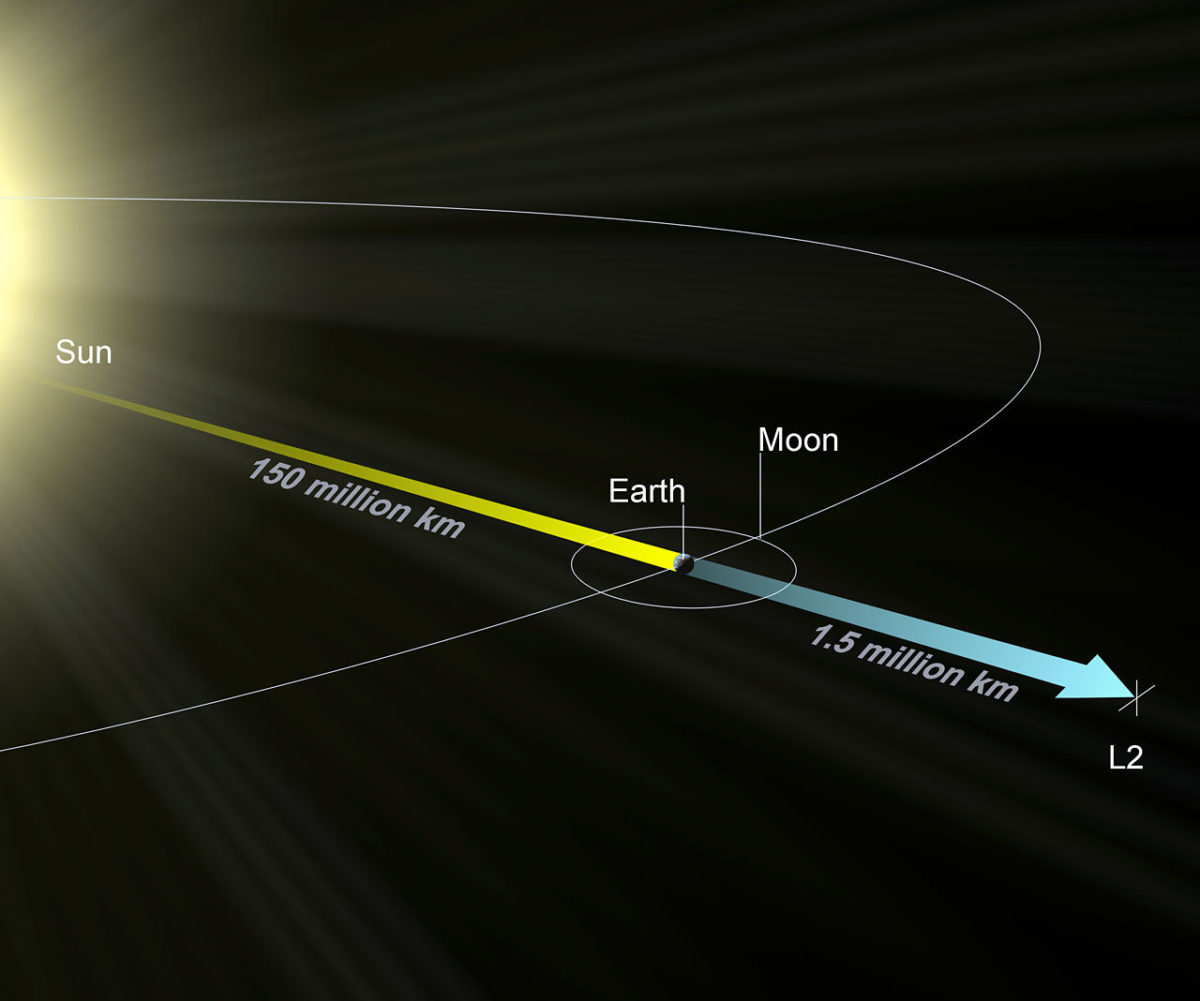Jason Davis • Jun 18, 2013
Goodnight, Herschel Space Observatory
The European Space Agency’s Herschel Space Observatory received its final command yesterday, as ground controllers directed the telescope to deplete the last of its fuel and slip into its final heliocentric orbit. Herschel’s observations had already ended on April 29, when the infrared observatory's liquid helium supply ran out.
The telescope was launched in 2009 to study early Universe galaxy formation, observe star creation and study the atmospheric chemistry of objects in our solar system. Although Herschel won’t be making any future observations, it leaves behind a vast archive of data that scientists can analyze for years.

Herschel has a 3.5-meter mirror—for comparison, that’s bigger than the Hubble Space Telescope’s 2.4-meter mirror. It observed infrared light with wavelengths from 55 to 672 micrometers (one micrometer equals one millionth of a meter). In astronomy terms, that’s the far-infrared, which means the telescope could see the heat emanating from some of the coldest objects in the Universe, including chilly clouds of gas and dust where baby stars are just starting to form.

Powerful infrared telescopes come with a price: a shorter shelf life. Herschel’s detectors were kept at extremely cold temperatures—just above absolute zero—in order to keep the telescope’s own heat from interfering with its observations. To do this, engineers cooled Herschel with liquid helium, which was expected to last three-and-a-half years. Herschel stretched the supply an extra five months, making its final observation on April 29.
During its operational period, the telescope orbited the Second Lagrangian point, or L2, 1.5 million kilometers from Earth. Spacecraft at L2 are able to cruise around the Sun in line with the Earth, which offers several benefits. Unlike low-Earth orbiting spacecraft, L2 objects don’t pass in and out of Earth’s shadow several times per day, allowing them to stay at a constant temperature. They also avoid the warmth of Earth itself, which is important for heat-sensitive telescopes like Herschel (the James Webb Space Telescope will also orbit L2).

On May 13 and 14, ground controllers fired Herschel’s thrusters for 7 hours and 45 minutes, sending it into a heliocentric (sun-centered) orbit to avoid damaging other spacecraft. Before disposing of Herschel, ESA operators used the opportunity to conduct a series of technology tests. In an article released by the ESA, Spacecraft Operations Manager Micha Schmidt said “the ExoMars team asked us to do some validation using Herschel’s Visual Monitoring Camera; a similar model will fly on their mission. And the Euclid team asked us for some reaction wheel tests.”
To look through more pretty pictures that Herschel took during its four year mission, check out this interactive map that allows you to zoom in on specific Herschel images.

Support our core enterprises
Your support powers our mission to explore worlds, find life, and defend Earth. You make all the difference when you make a gift. Give today!
Donate

 Explore Worlds
Explore Worlds Find Life
Find Life Defend Earth
Defend Earth

